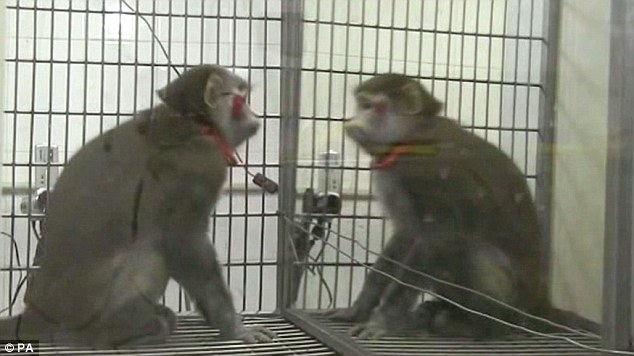
Unlike humans and great apes, rhesus monkeys do not instinctively know it is their own face staring at them from a mirror.
By training monkeys to follow lasers on a mirror, scientists were able to teach the animals to look at, and recognise, their own reflection.
 |
|
Scientists from the Chinese Academy of Sciences trained the monkeys to recognise their own reflection by sitting them in front of a mirror (pictured) and shining laser light on their faces. After five weeks, the monkeys learnt to touch areas marked by the laser spot by looking at their reflection. |
And once this skill had been learnt, the monkeys were able to use mirrors spontaneously to explore hidden parts of their bodies.
Dr Neng Gong, from the Chinese Academy of Sciences who led the research, said: 'Our findings suggest that the monkey brain has the basic 'hardware' [for mirror self-recognition].'
In earlier studies, monkeys have shown either no sign of recognising their own reflection, or little recognition, despite using mirrors as tools for observing other objects.
 |
|
Dr Neng Gong, from the Chinese Academy of Sciences, said: 'Our findings suggest that the monkey brain has the basic 'hardware' [for mirror self-recognition], but they need appropriate training to acquire the 'software' to achieve self-recognition.' A baboon is pictured looking at a mirror. |
The findings, published in the journal Current Biology, offer new hope to people who lose the ability to recognise themselves in a mirror due to brain disorders such as autism, schizophrenia or Alzheimer's disease, the researchers said.

86-10-68597521 (day)
86-10-68597289 (night)

52 Sanlihe Rd., Xicheng District,
Beijing, China (100864)

